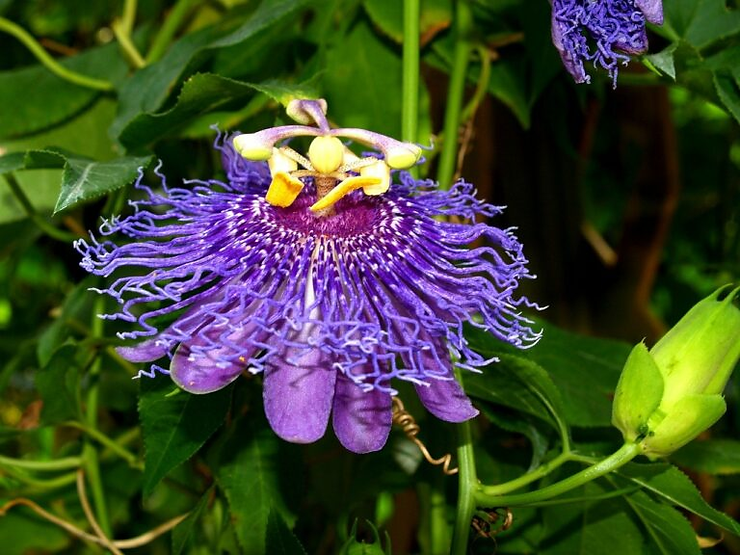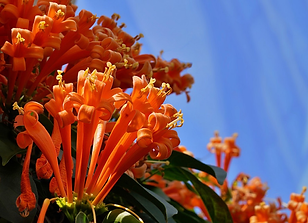
Flowering vines are used for many purposes. They create privacy, help shield from the wind, hide unsightly objects (a/k/a eyesores), and even attract hummingbirds. Vines also add texture and color to an overlooked area of your yard. In addition to their beauty and function, some flowering vines add a lovely fragrance throughout your garden. This post highlights climbing vines that bloom at varying times making it easy for a beginning gardener to make a sparse garden look like it has been established for years. It also touches on important topics to consider before purchasing plants. Continue reading to learn more about climbing flowering vines and how to choose the perfect vine.
(Some of the links within this post are affiliate links on which I receive a small compensation from the sale of certain items with no added expense to you.)
(As an Amazon Associate I earn from qualifying purchases.)
Things to Consider When Choosing a Vine
In addition to contemplating the purpose for purchasing a climbing vine, read below to see how to select the ideal vine for your garden.
Many beginner gardeners choose plants because they “look pretty”. However, the more seasoned gardener knows what to look for when selecting them. Since this blog focuses on the gardener just starting out, I’ll highlight important factors to consider when purchasing climbing flowering vines.
Is It a Perennial or an Annual?
This is an important question because it will determine whether you have to purchase and/or replant the vine yearly. Perennials last from year to year, whereas annuals will only survive one season. To learn more about the classification of plants, read Flower Classifications.
What are the Light Requirements?
After determining where you would like to grow a flowering vine, take note of the amount of sunlight shining on the area as the sun travels through the day. Ask yourself how many hours of direct sunlight does it get? Does it get morning, midday, or afternoon to late afternoon sun? Is it in a predominantly shaded or sunlit area? Is the sunlight diffused or strong? When during the day does the area receive the hottest sun?
This is very important when deciding which plant to purchase. If you plant a vine in an area that is not consistent with its light requirements, it may die, be more prone to disease, and/or not bloom as profusely as it would have if it were planted in the correct place.
To read more basic information on gardening, click Gardening Ideas for Beginners.
What are the Water Requirements?
Water is one of the lifelines of flowers. Without adequate water, the plant will die. First, you must ask yourself are you willing to water the plant daily or weekly, or would you rather just plant it and let it be? Some vines are more drought resistant than others. Reading the label is very helpful. It will tell you if the plant is drought resistant, prefers a wet area, can grow in standing water, or likes an average amount of water per week. (An average amount of rainfall/water per week is one inch.)
Watering deeply with a soaker hose is recommended.
What are the Soil Requirements?
Most climbing vines are tolerant of most soil types. However, to encourage good root growth, provide the vine with moist, good, well-drained soil.
What is Your Plant Hardiness Zone?
This is a zone map which gardeners use to determine which plants will grow and thrive in their particular area. Below is a USDA Plant Hardiness Map to which you can refer. If you do not live in the United States, google plant hardiness zone for your location.
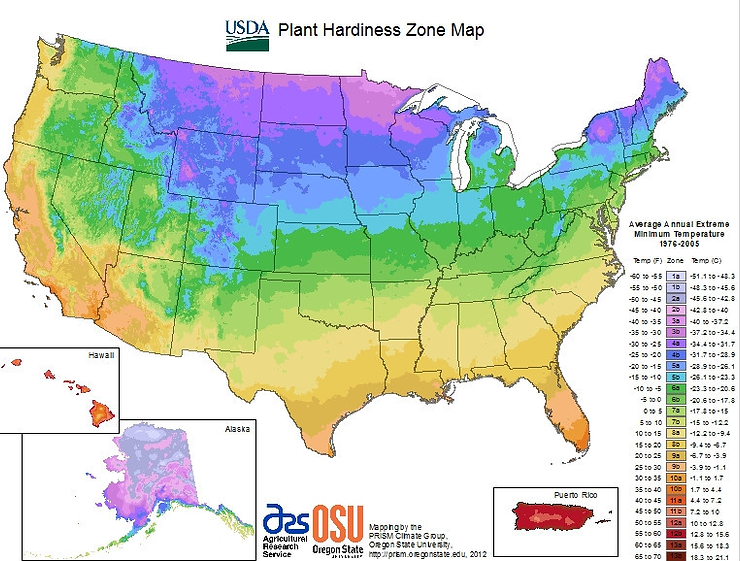
This information will also be listed on the tag that is on each plant at the time of purchase.
Fragrance, Bloom Time, and Weight
Many flowering vines have a lovely fragrance, but some do not. Therefore, if the aroma is a priority to you, check the characteristics of the plant before purchasing it.
Flowering vines will bloom for a couple of weeks, a month or two or three, and even year round. Be certain which variety of flowering vine you prefer. If your yard is large and has areas in which to grow climbing vines, I suggest, planting blooming vines in succession to have long lasting flowers throughout the season.
Some flowering vines have a woody vine. These tend to be heavier and require a more sturdy support on which to grow. An example of a woody vine is Wisteria.
Deciduous or Evergreen
Most climbing vines are deciduous, meaning the leaves drop off in the fall. Deciduous plants’ leaves are broad, wide and flat.
However, there are a few varieties of climbing flowering vines that are evergreens. An evergreen is a plant that retains its leaves throughout all seasons. It is forever green!
This is yet another consideration when deciding which climbing flowering vine to choose.
Remember to consider these options before purchasing your vine. Your garden is your domain. Choose what pleases you the most.
Fast Growing, Slow Growing, Invasive
The speed with which the vine grows is a consideration when selecting a climbing vine, so take heed of the growth factor when choosing your vine.
Many vines are vigorous growers and spread rapidly. They can overtake a garden in a few seasons. However, with careful maintenance and pruning you can easily manage an invasive vine.
You need to ask yourself, do you want a fast or slow grower? Remember, the faster the growth the quicker it will engulf your garden.
Selection of Climbing Flowering Vines
As with all plants, climbing flowering vines come in many varieties. Therefore when choosing a vine, check the tag to ensure the vine you select has the qualities you desire. The following are general descriptions.
Mandevilla
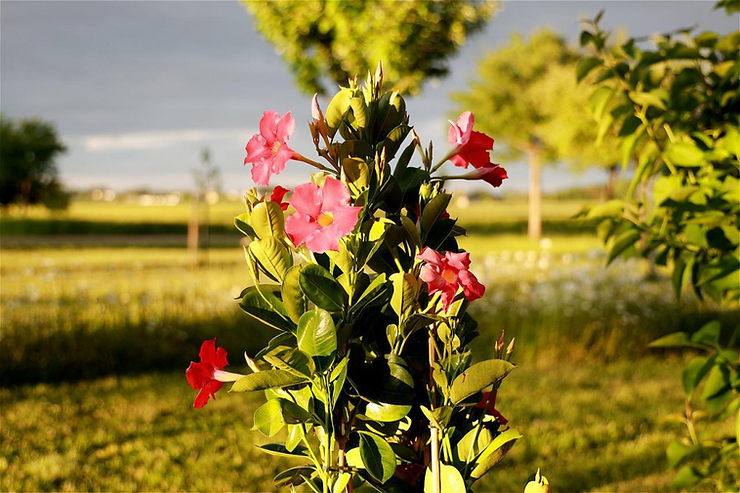
-
Perennial/Annual – Perennial in zones 8 and above; annual in zones 7 and below
-
Light Requirements – 6 hours of full sun
-
Water Requirements – damp but not soggy
-
Soil Requirements – well draining
-
Hardiness Zone – see above
-
Bloom Time – all summer
-
Deciduous/Evergreen – deciduous
Trumpet Vine
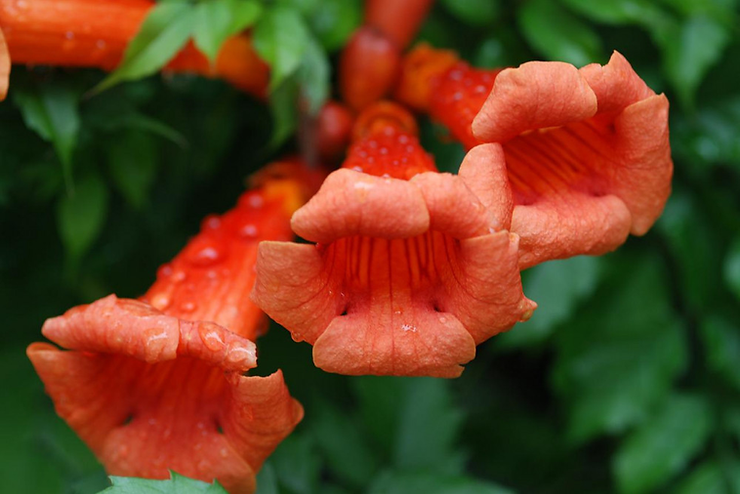
-
Perennial/Annual – perennial
-
Light Requirements – full sun to part shade
-
Water Requirements – only as needed
-
Soil Requirements – well drained
-
Hardiness Zone – 4 to 9
-
Bloom Time – summer through fall
-
Deciduous/Evergreen – deciduous
Trumpet vines are invasive. They can grow 30 to 40 feet in a season
Sweat Pea
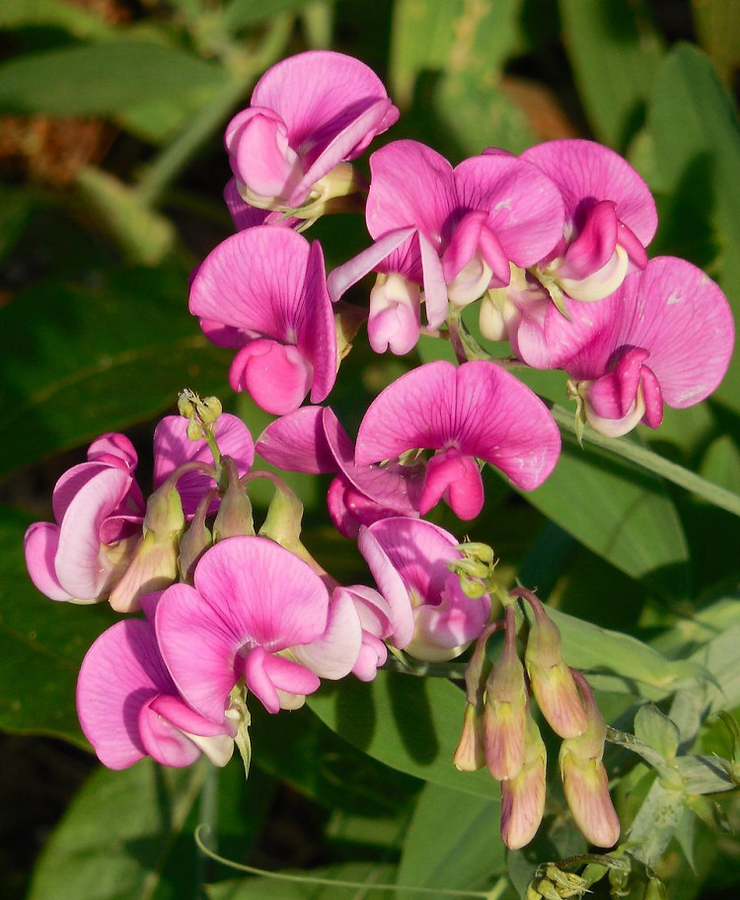
-
Perennial/Annual – perennial
-
Light Requirements – full sun, however keep the roots cool with mulch
-
Water Requirements – regular watering
-
Soil Requirements – rich well drained; slightly alkaline
-
Hardiness Zone – 3 to 8
-
Bloom Time – varies according to variety
-
Deciduous/Evergreen – deciduous
Sweet Pea is an invasive vine.
Yellow Jasmine
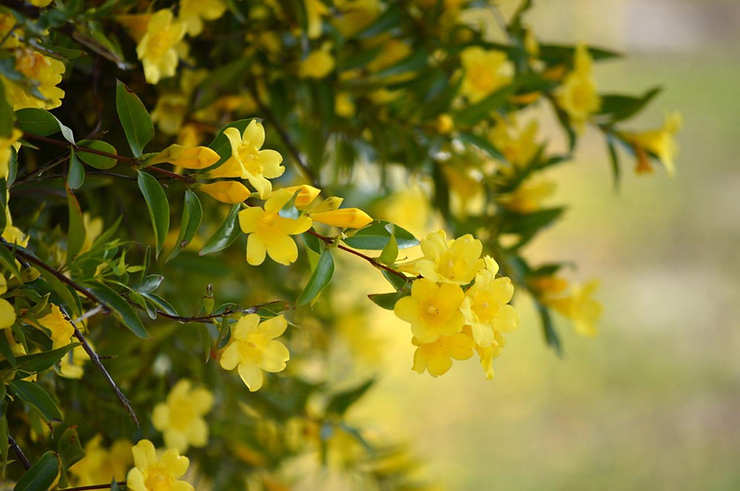
-
Perennial/Annual – perennial
-
Light Requirements – full sun to part shade
-
Water Requirements – keep moist
-
Soil Requirements – rich, well drained
-
Hardiness Zone – 7 to 10
-
Bloom Time – summer to fall
-
Deciduous/Evergreen – evergreen
Clematis
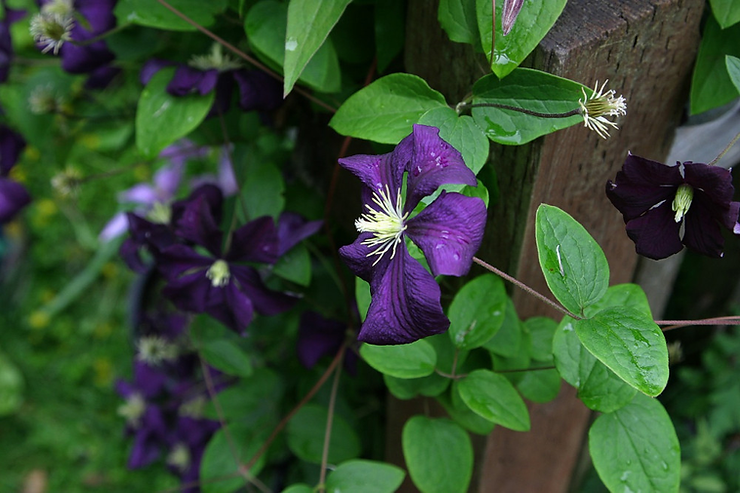
- Perennial/Annual – perennial
-
Light Requirements – full sun for at least 6 hours
-
Water Requirements – one inch per week
-
Soil Requirements – rich, well drained but keep the soil cool
-
Hardiness Zone – 4 to 9
-
Bloom Time – different varieties bloom at different times; they can bloom from early spring to fall
-
Deciduous/Evergreen – deciduous and evergreen varieties
Specific varieties of Clematis have woody vines.
Climbing Roses
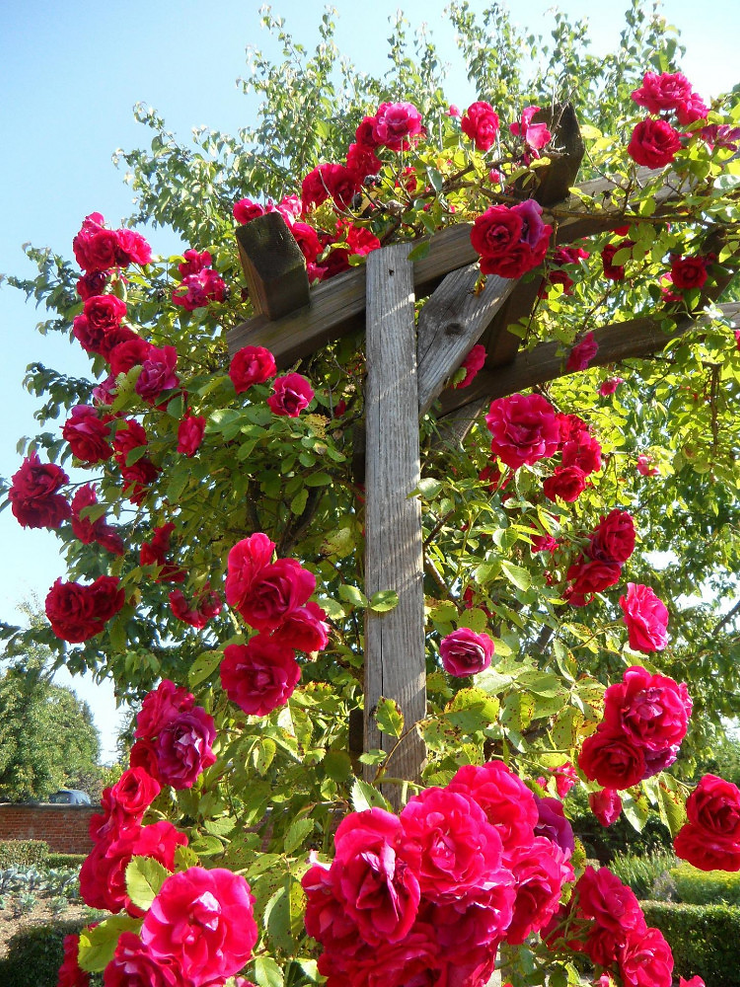
-
Perennial/Annual – perennial
-
Light Requirements – full sun
-
Water Requirements – moist
-
Soil Requirements – rich, well drained
-
Hardiness Zone – 5 to 10
-
Bloom Time – varies depending on the variety
-
Deciduous/Evergreen – deciduous
Final Thoughts
It requires a lot of thought to select the perfect climbing flowering vine. First and foremost, decide why you are planting a climbing vine. Then remember to consider the soil, light, and water requirements of the vine. In addition, know your hardiness zone.
Fragrance, bloom time, whether it has woody stems, and how invasive the plant is are all factors to consider when choosing vines, especially when deciding on their locations. Please keep in mind these and the other important suggestions in this post.
I hope you have learned a little more about gardening from reading this post. As a beginner gardener, you’ll want to absorb all the knowledge you can in order to create the beautiful garden of your dreams.
Please leave a comment below and share this post with others.
Happy Gardening,
Nina

